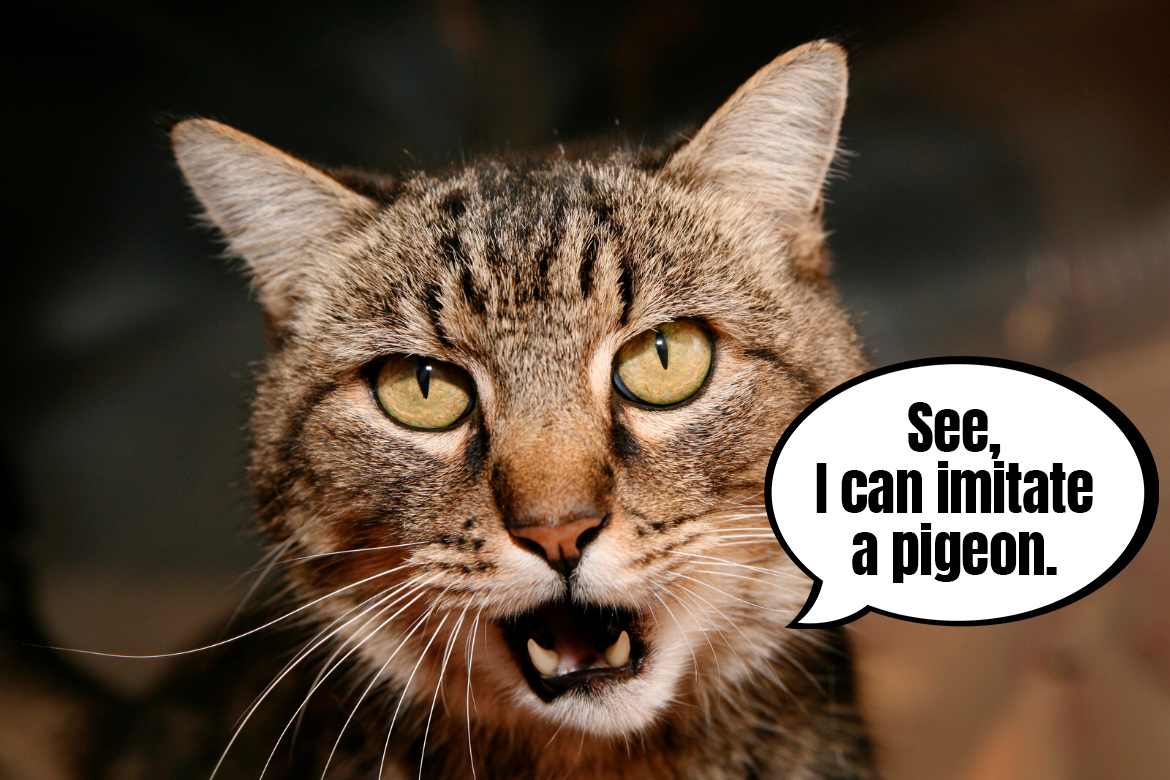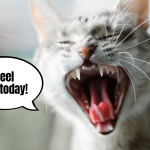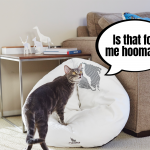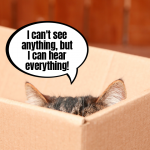Interpreting the cat language is an art that only a chosen few managed to master to purrfection. Do you sometimes wonder, fabCats: “What went through this cat’s mind?” or ask them directly: “Can you explain what you’re thinking about?”. Meowing, hissing, trilling, chirping, purring or silent stuttering are just some of the popular sounds cats make and each of them has a different meaning. Today we encourage you to talk to your cat and for this occasion we give you a handy “cat to hooman” dictionary. Curious?
How do cats communicate with people?
We often hear that cats are not as expressive as dogs and it’s hard to read their mood or communication from their face. There’s a lot of truth to that, but only when we’re trying to understand cats using the dog language and behaviour dictionary! Meanwhile, the size of a cat’s pupils, position of their ears and whiskers, muscle tension, tail position and general body language all have their place in a cat language – it’s not just the face. And that’s still not everything.
As cat Guardians we can observe our cats all day, trying to understand their intentions. Tehir body language is, however, their main way of communication with other representatives of their own species. To talk to humans more effectively, cats purrfected their vocal skills. It’s us that they mostly direct their meows, purrs and trills at, trying to express their happiness or discontent. The problem is that most cat’s don’t give us a cat-hooman language to use.
Cat language dialects
Right at the beginning of cat-human contact we stumble on the first hurdle: to communicate with cats we need to learn to receive their signals and understand that there’s no one, universal cat language. Each fluffy pet uses their own dialect and us, cat Guardians, are just trying to learn it throughout the entire life of our cat companions – with more or less success.
As part of training, with treats as a reward, we can teach a cat to give paw, sit or come when their name is called. Cats, using their precious attention and company as a prize, teach us to react to their hisses, meows and purrs. And yes, they can use it to their advantage, forcing a particular reaction out of us. But can you truly resist the sweet, begging look on their face and a quiet meow from a cat sitting under your office chair when you work?
From cat to hooman – popular cat sounds dictionary
Cats have the ability to make over 100 distinctive sounds, fit for different situations and used mainly when communicating with people, rarely with other cats or four-legged friends. Although in nature cats are quiet creatures that can sneak around or hide from danger without making a sound, at home they become the kings of their own jungle and put their Carers in their place with voice commands. Which ones do you hear the most often?
The classic meow – meows are the most universal cat sounds and there’s no chance that a person could create a precise definition of it translated to any human language. They can have as many variations as there is situations in a cat’s everyday life – they use it to talk to people, but to themselves as well. Yes! Cats can also “think out loud”. Here are some of the most popular meows:
- The short meow – a cat’s version of “hi”, often used to greet the cat Guardian when they’re coming back from work or right when they wake up. It’s light, short and happy, often inviting us to answer with the same, short “hey!”.
- “Mau?” said almost with a question mark at the end is the most popular cat question and a way of getting the Guardians attention. It often comes up in cat-hooman conversations, but also when the bowl in the kitchen happens to be strangely empty.
- Long, stretched out “meooooow” is often a cat’s reaction to… no reaction! Yes – cats can get annoyed at lack of attention from their humans and extend their meows along with their growing annoyance. “There’s still nothing in my bowl! It’s been 5 minutes! I’m calling you and calling and you’re not here! Come here, quickly”.
- A deep, guttural, low meow often sounds like a child crying and in many situation it’s intended just like that – it’s supposed to tell the cat Guardian that something’s wrong. Cats don’t like showing their pain or suffering, but meowing for help can express their stress, fear, anxiety or an urging beg for attention.
Chirping. Not all cats chirp, but those who do are definitely getting their Carer’s attention. It’s often a happy sound, used instead of or together with short meows to say “hi”. Some kittens have such a light voice that almost all their meows sound like chirping. Others use it rarely. Sounds like these can be, similarly to meowing, a way for a cat to talk to themselves or to call a hooman to follow them.
Trilling. Observing birds is cats’ TOP 3 favorite activity. The fluffy pets who have an ear to learn foreign languages can master communicating with pigeons to the extent where they start trilling, billing and cooing themselves! Every cat Guardian has their own name for sounds like this, but one thing is sure – if your cats are talking to birds, with or without sound, their fast-moving lips and long, chirping monologues are an unforgettable sight. All of our cats so far have done it and we can never get bored of it – it’s so funny 🙂
Purring. Besides meowing, purring is definitely an important sound of the cat language and one of the few ones that is used to communicate with other cats as well. Purring can take different shapes and meanings – depending on the situation it can mean the cat feels happy, pleasure, is falling asleep or tries to calm the nerves or ease pain.
Growling and hissing never mean anything good. It’s a clear warning sign from the cat, used in times of danger or discomfort that make the cat angry. Growling is an explicit: “walk away or I’ll resort to using my paws!”. A master of growling is our team cat Kitku Yoda – we fear to be scared when he starts hissing 🙂
Does talking to your cat pay off?
Definitely. Making conversations with your own cat can seem like a crazy cat lady or guy thing, but in reality it’s a good way of building a strong relationship between the cat Guardian and their furry friend. Answering to cat’s calls and meows gives you the opportunity to learn the cat language and messages that they want to tell you, but it also tells the cat that talking to hoomans is worth it. We, as an example, talk to our cats passionately and often get answers full of meows!
Cats whose Guardians often talk to them are often more vocal than those who can’t get find a common ground with their hoomans. It’s a good thing! Although constant meowing can often be annoying, it lets us know that the cat likes being in our presence and talking to us. Let the babblers be babblers and if they encourage us to talk to them – let’s talk. Do your cats like to make long monologues, fabCats? Or are they maybe the quiet ones who use their voice only on special occasions? We’re waiting in the comments section for your stories.




